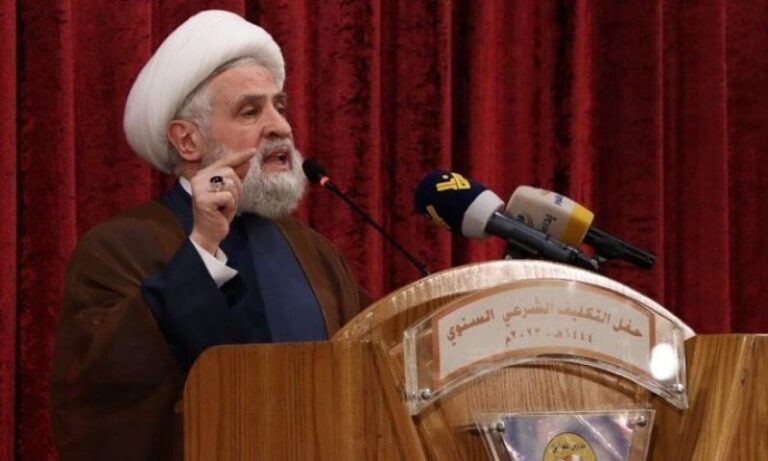China test-fired an intercontinental ballistic missile into the Pacific Ocean on Wednesday, stirring security concerns in the region already tense over Beijing’s territorial claims and rivalry with the U.S.
The ICBM carried a dummy warhead and fell into a designated area of the sea, the Defense Ministry said in a statement posted to social media.
The launch by the People’s Liberation Army’s Rocket Force was part of routine annual training, complied with international law and was not directed against any country or target, according to the statement.
It is unclear how often China conducts tests over such a distance. In 1980, China launched an ICBM into the South Pacific.
A map published in Chinese newspapers at the time showed the target area as roughly a circle in the center of a ring formed by the Solomon Islands, Nauru, the Gilbert Islands, Tuvalu, western Samoa, Fiji and the New Hebrides.
The U.S. and non-governmental organizations have said China has been building up its missile silos, but it’s unclear how many missiles and nuclear warheads it has added to its arsenal.
The People’s Liberation Army, which functions as the ruling Communist Party’s military wing, runs China’s space program, which has established an orbital station and has ambitions to set up a Moon base and land a spacecraft on Mars.
Rocketry has long been part of China’s development into a major global power, spurring nationalism and growth that has made China the world’s second-largest economy.
The U.S. remains China’s main global rival, although Japan, Taiwan, the Philippines and others have territorial disputes with Beijing that occasionally threaten to develop into military clashes.
China maintains a “no first use” of nuclear weapons policy, even as its desire for regional predominance grows.
Tests of China’s intercontinental ballistic missiles into international waters are rare. Experts and a historical survey of China’s program by the Washington-based Nuclear Threat Initiative suggest the last occurred in May 1980. That test saw China launch its DF-5 missile into the South Pacific.
China typically launches missiles toward its western deserts from its east coast, said James Acton, the co-director of the Nuclear Policy Program and a senior fellow at the Carnegie Endowment for International Peace. The fact that China launched a test that splashed down in international waters was unusual, but mirrors testing that the United States does for its own ballistic missile fleet.
“When they haven’t done something for 44 years and then they do it, that’s significant,” Acton told The Associated Press. “It’s China’s way of telling us, ‘Like you, we’re not ashamed we have nuclear weapons and we’re going to behave like a great nuclear power.’”
The launch came amid the ongoing United Nations General Assembly in New York. China is one of five veto-holding permanent members of the U.N.’s Security Council and has sought to gain influence over its key departments involving human rights and that align with its authoritarian system.
A series of corruption arrests this year ensnared several leading officers in the Rocket Force, alongside the detentions of two previous defense ministers amid allegations of misconduct.
A test launch now could both provide assurances to China’s population amid an economic downtown and a signal to the world that the party remains firmly in control and is determined to rise to global prominence.
“We’re entering a new age. We’re entering an age where the U.S. and China are engulfed in what feel like an arms race,” said Jeffrey Lewis, a missile expert at the James Martin Center for Nonproliferation Studies at the Middlebury Institute of International Studies in the U.S.
“The Chinese government always prioritized diplomatic issues over operational readiness. It’s just a different China. It’s a China that does not feel constrained,” he said.
“There’s a renewed emphasis on assuring themselves these systems work and demonstrating to others they work,” Lewis added.
Meanwhile, tensions remain high over Taiwan, and with the Philippines, where the U.S. Army has deployed its new mid-range missile system, known as Typhon, to Northern Luzon. On Wednesday, two Filipino officials said the U.S. and the Philippines have agreed to keep the system there indefinitely to deter China.
“I don’t know what’s the plan, but if I were to be followed, if I were given the choice, I would like to have the Typhon here in the Philippines forever because we need it for our defense,” said Gen. Romeo Brawner Jr., the head of the Philippines’ military.
Defense officials in Japan and Taiwan declined to comment directly on the Chinese announcement. Both, along with South Korea, maintain robust defenses against Chinese moves, including early warning systems and air raid shelters.
(AP)












One Response
Too much tumult globally without any resolutions. Every nation should launch ICBMs at their rivals. Mutually assured destruction (MAD) was always a mere pipe dream. Genug shoyn. Get it over with. It will happen anyway, and who needs the suspense?